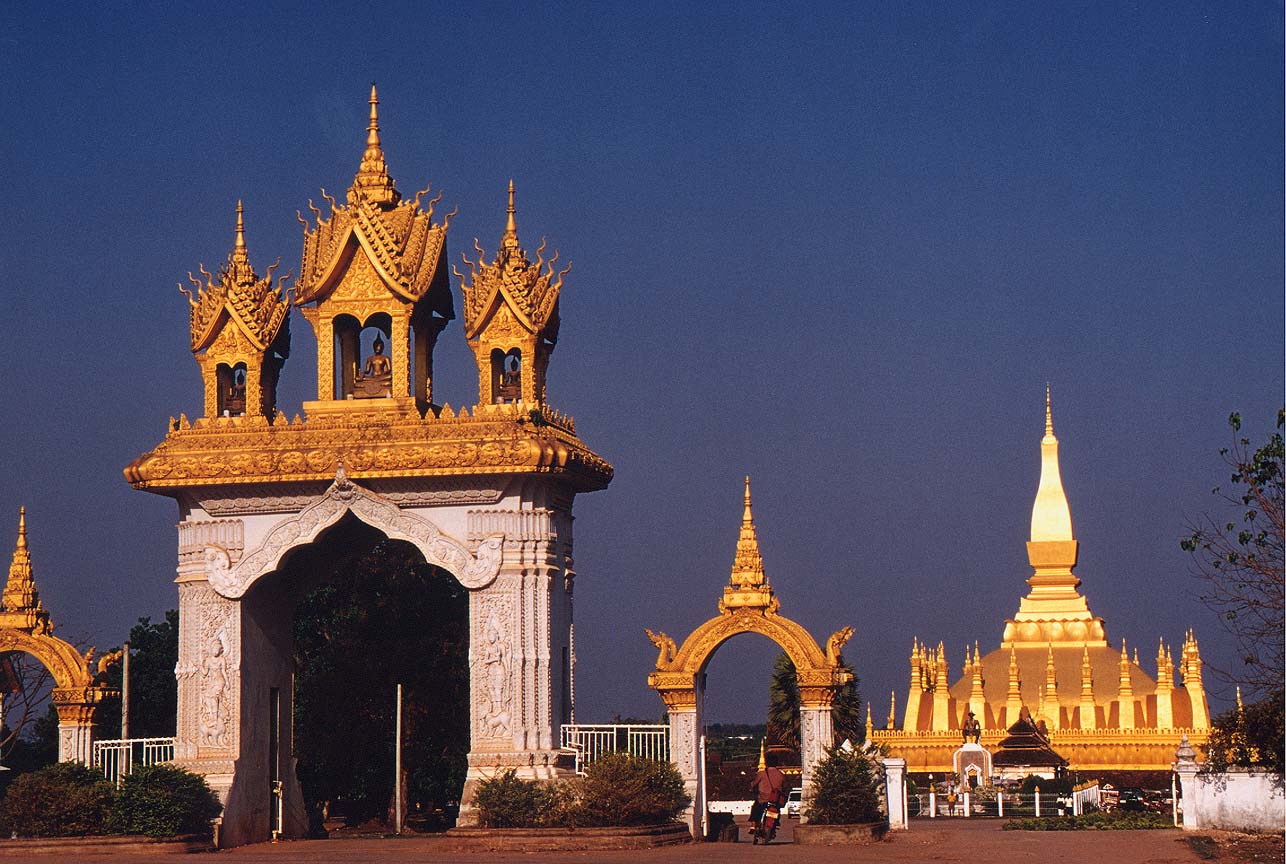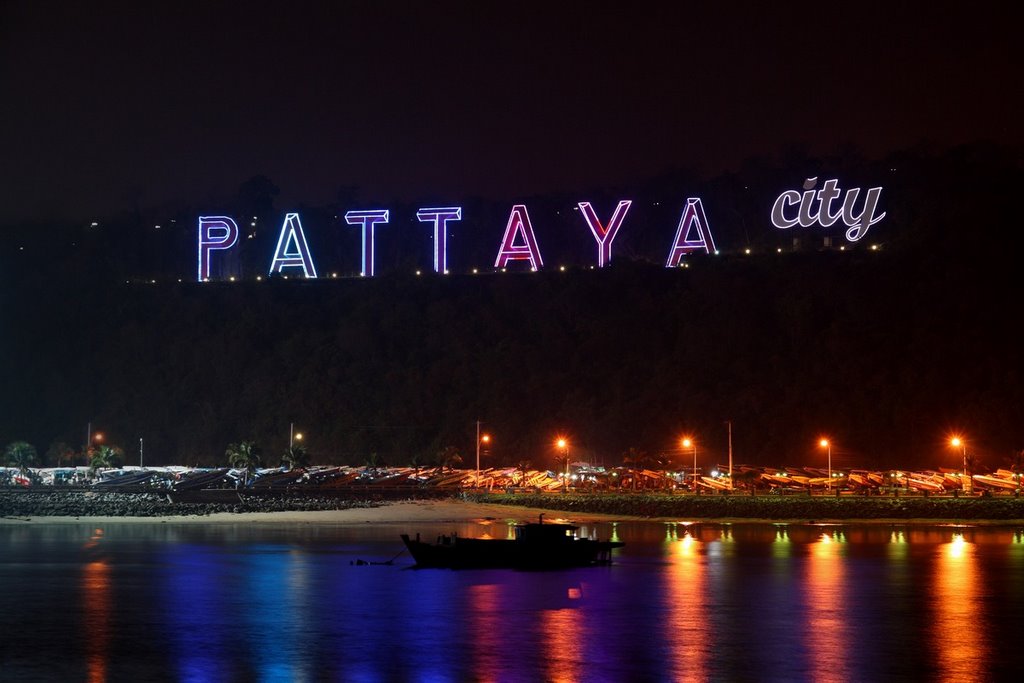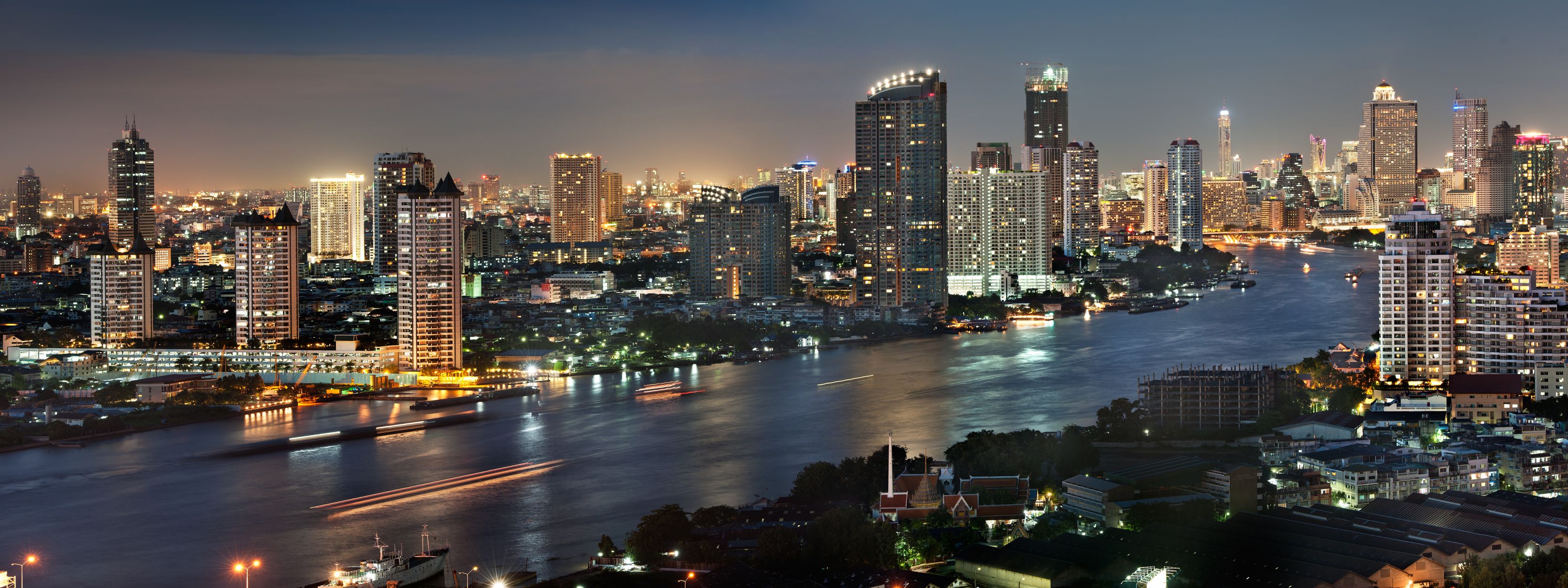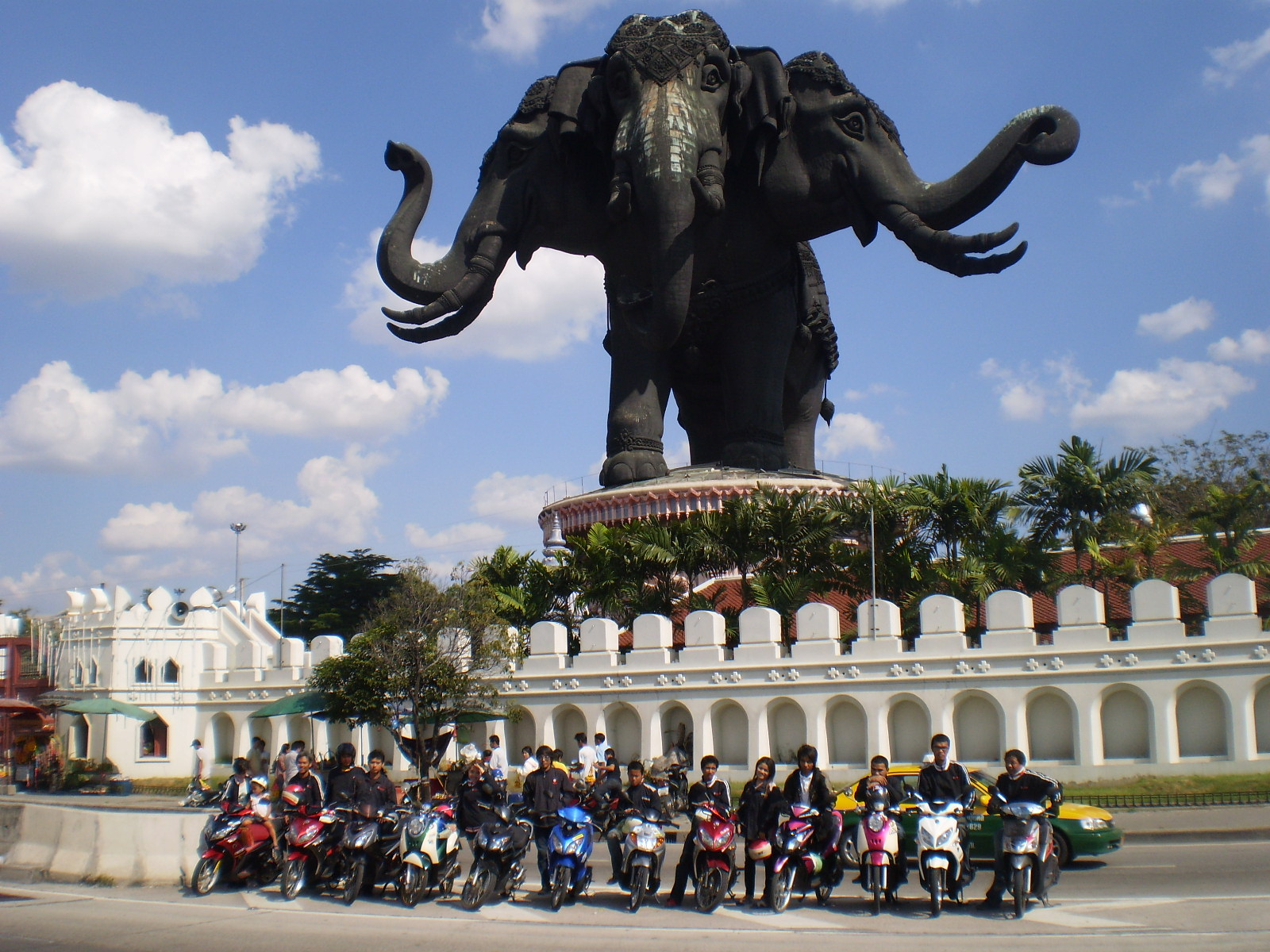The woman in the green-cloth militar shirt was busy playing pool on her computer. I approached her small both on the Laos/Thai border and coughed slightly. She looked up briefly to inspect my visa. Pushed it back into my hand and went back to a tricky shot on her eight ball. Welcome to Laos.
When you get tired of the 90-day visa runs to Cambodia, there is an alternative. Laos hosts many treasures and a visa run to the capital, Vientiane, is an ideal way to kill a few days. My 13-hour overnight bus journey from Sri Racha (40 minutes from Pattaya) to the north-eastern Nong Khai border town cost 450 baht. As we finished the 600 kilometers drive we pulled into the terminal. And half a dozen tuk-tuk drivers began sprinting alongside the bus until it was parked up. After some gentle bartering, one chap agreed to take me to Friendship Bridge for 25 Baht.
Once at the bridge (opened in April 1994) I strolled over to the Thai immigration office and, having filled in the mandatory form, was ready to cross over. Minibuses wait regularly by the immigration point to take people across for 20 Baht. It doesn’t leave until it’s full, and here they have a liberal definition of full. Because I was the last aboard I had to content myself with being squeezed into a small step, along with my backpack, inches from the driver.
At first a collection of shrubbery obscures the view. But after a moment the Thai flags at their side of the bridge can be seen blowing briskly in the morning breeze. The bridge offers views of the Mekong River and small houses nestled against the riverbank. Passing two fading Laos flags at the other end of the bridge, the minibus went through a pair of wrought-iron gates and into one of the ten poorest countries in the world. To enter Laos you’ll need a passport photo and US$30, and in return you’ll receive a 15-day visa. Should you want to stay longer than 15 days, the best place, in fact some say the only place, to extend it is in Vientiane.
With my visa in hand, the next obstacle was the pool-playing woman. Behind her was a smal desk where a man demanded 20 Baht for no apparent reason, and lastly there was another officer who wanted to check my passport. At this point you could of course turn around and get back in your minibus, but having travelled all this way it seems a little churlish.
It’s 24 kilometeres to Vientiane, and transport options are numerous as jumbo drivers wait eagerly outside. Jumbos are the Lao version of songtaews, and are essentially trucks with two wooden rows of seating in the rear. Some of the drivers wanted 200 Baht, but one came down to 30 Baht. The drive didn’t present a country of extreme poverty, some houses seemed positively opulent, despite being stuck between paddy fields.
Once in Vientiane, I found the pleasant Khamkoun Hotel (450 Baht a night) just past the Morning Marked. If you want to be even more central, head for the riverfront. The hotel provided a guidebook, which included an introductory welcome by Somphong Mongkholvilay, the President of the National Tourism Authority. A sombre photo of Somphong looked as thought he was almost scowling at the reader as he growled: “Country of smile and hospitality, Laos is opening its boundaries since for a few years. Laos is willing to welcome you.”
Even if Somphong disn’t feel like smiling, the rest of the brochure was written with togue firmly in cheek. On vaccinations, there was the reassuring: “Hepatitis, Japanese encephalitis: if you have not been vaccinated, it’s to late!” And the wonderful: “Bite from tiger? Very bad, especially in rainy season. You will be comforted knowing that your family is going to get news from you, reading the daily newspaper.” Quite why a dry-season bite is preferable, it didn’t say.
By now it was 9.30am, and I fancied breakfast. At the Morning Marked three women competed to sell baguettes and I bought one of the sticks for 20 Baht. It was a combination of lettuce, spicy and sour sauce, pork skin, mayo and home-made ham, and was fantastic. Just down from the marked is one of the central features of the city: Pratuxai, a large arch with obvious similarities to the Arc de Triomphe in Paris. Although it looks impressive, its origins are quite accidental. America gave Laos cement in the 1960s for a new airport, but the government had other ideas and used it to create a victory monument.
Vientiane is a small city, and the only must-see site that requires transport is the national symbol, Phra That Luang. From a distance it seems to be straight from the set of Thunderbirds; a suare base with sharp spear-like shapes guarding a large central missile. It is compelling, if only because it lookes so aggressive. After a look around, a jumbo took me back to the city centre, and the Mekong. Driving down to the river, it was clear many of the houses had a French flavour.
I tried the super-strong Laos coffee on the riverfront before heading to the city’s most famous temple, Wat Si Saket. You could be unkind and say it’s the most famous largely because it’s the only one that wasn’t destroyed by marauding Thai’s in 1828, but that would be unfair. The fact it was spared is largely to do with it’s Thai-style, and today it stands quietly und unpretentiously just off the riverfront. Yellow-stained walls form a cloister around the perimeter. which houses hundreds of smal, bell-shaped niches. These in turn are each home to two small Buddha images. Behind the perimeter, coconut trees form a scenic backdrop.
Inside the main temple are hundreds more niches and Buddhas. It’s a small temple, more intimate and less austere ten many others, thanks to it’s relativly small size and the simple but poignant architecure. Vientiane may lack the temples and attractions o other cities, but it’s a place where time seems to drift by almost unnoticed, and that’s part of the appeal. If you seek true tranquillity, then Wak Sok Pa Luang, a herbal and sauna retreat just outside the city, is the place to go.
Wooden huts and orange robes draped out to dry pointed the way through a small forest towards my destination – a substantial tree house. At the top there were six straw beds laid out ready for massages while to the left was a small room with steam seeping out, and behind that a changing area. Opening the sauna door let out a storm of steam that made it impossible to see where the other end of the hut was. I sat on the first piece of seating that hit my knee and found the room was filled witha pleasant herbal smell, not that different from lemongrass. The massage was just as good. A Laotian massage is gentler than the Thai equivalent, but just as exhilarating.
Fully refreshed, I looked forward to to a night in the big city. We all know evenings in Pattaya offer a wonderful selection ofrestaurants and nightlife. Vientiane is about as far removed from that as it’s possible to get. While most places are shut by 9.00pm, what there is of nightlife is centred on the Mekong. The best solution is to find a small row of Western-style restaurants and pubs where the other tourists hang out, and nurse a Beer Lao until closing time.
A couple of days here will enable you to see all the things worth seeing. Your options then are to head to Luang Prabang, undoubtedly the country’s finest spot, or ro catch a bus back down to Pattaya.
Fact File:
1. The Transport Company runs daily buses to Nong Khai. Call 271-0101 for their regular bus or 279-4484 for the air-con version.
2. If you fancy flying, ring Thai Airways on 260-0070, but you’ll have to complete the journey by road from Udon Thani.
3. If you choose to stay in Nong Khai, there’s Sala Kaew Ku temple to visit which has some odd-looking statues, there is a Buddha Park or there’s the Po Chai day marked.
(This post was originally written for an old blog in February 2005, and then moved here)







